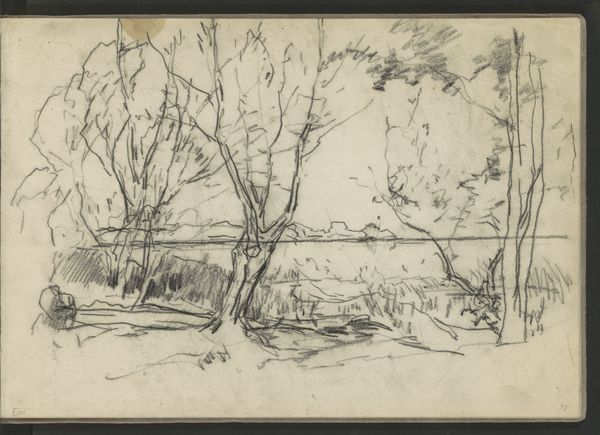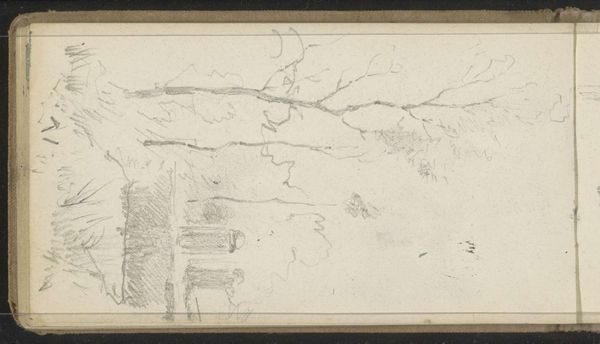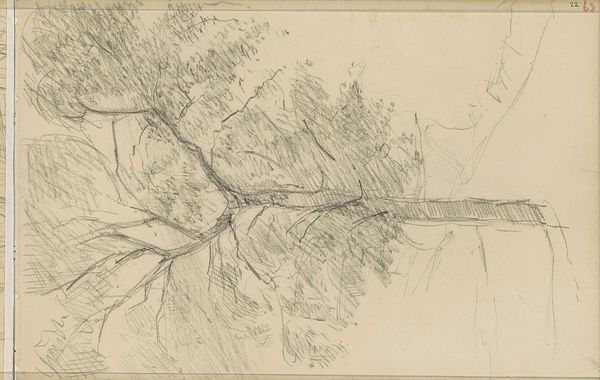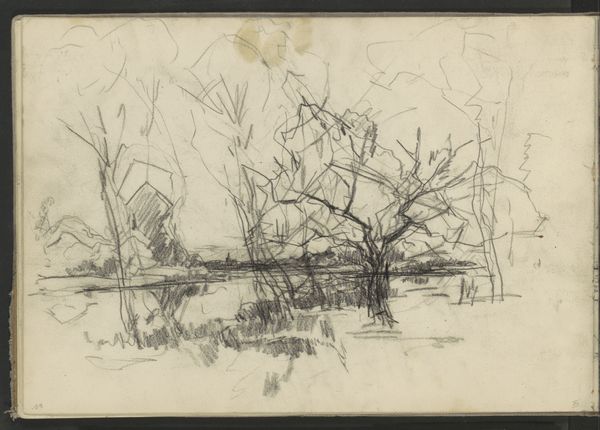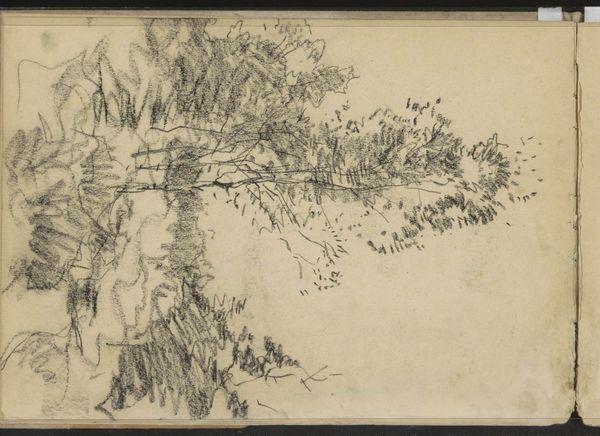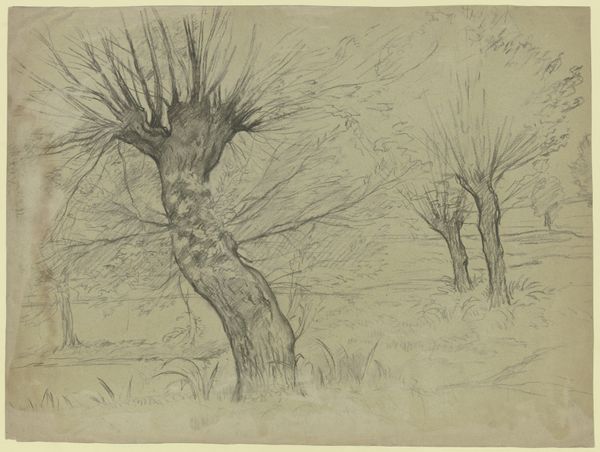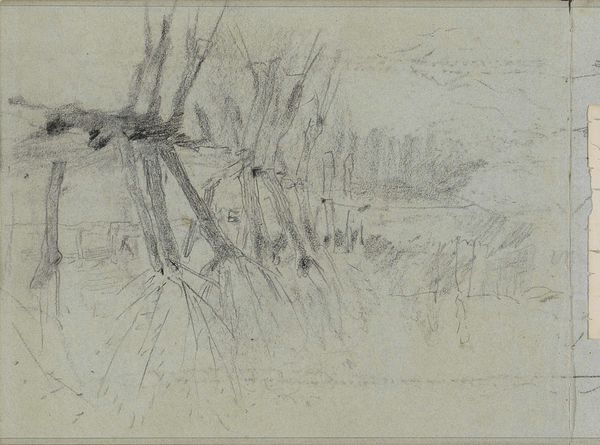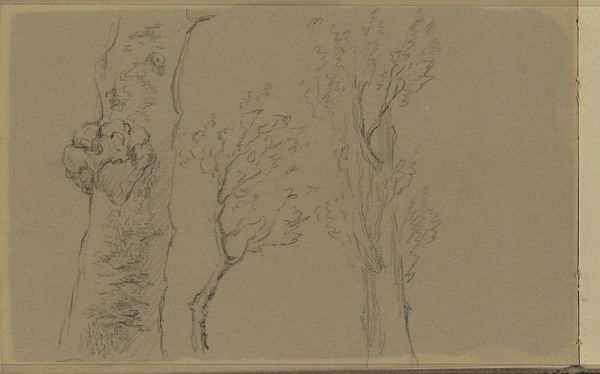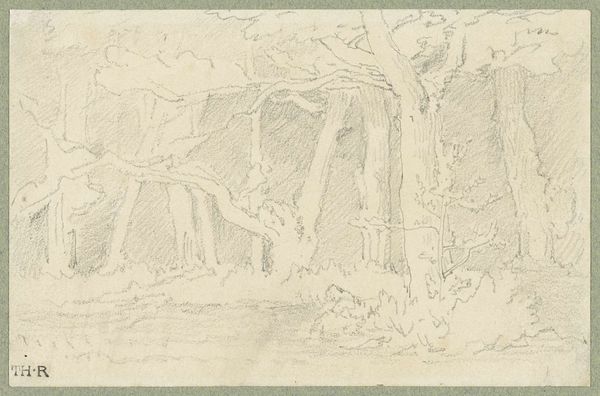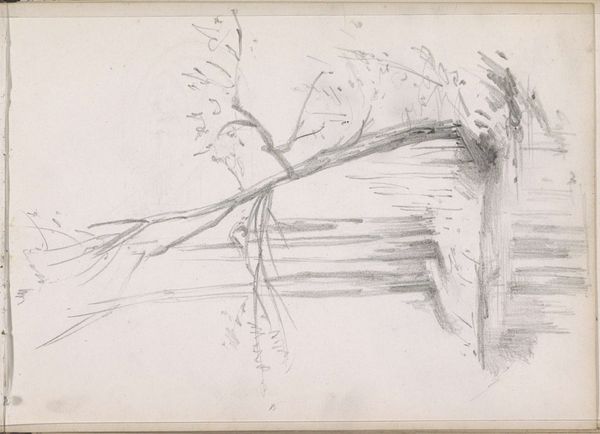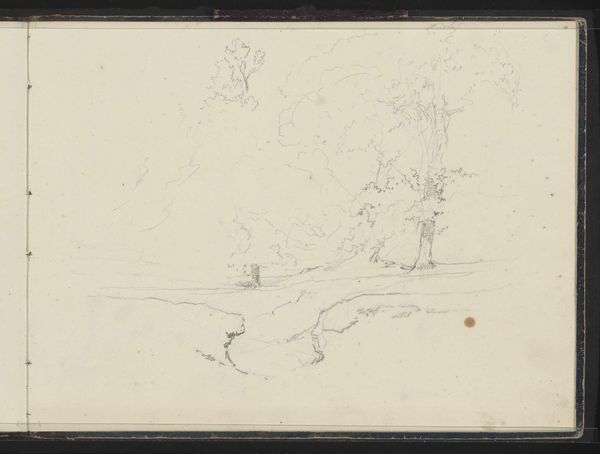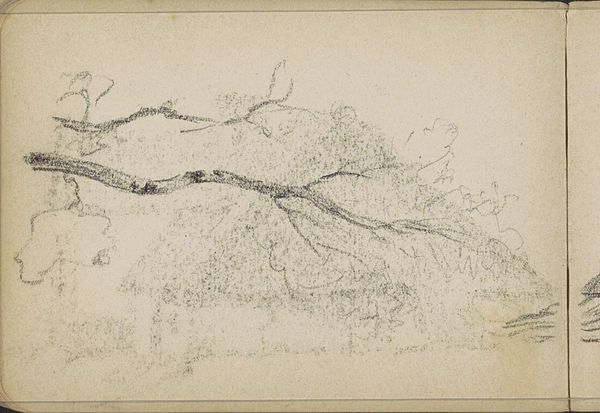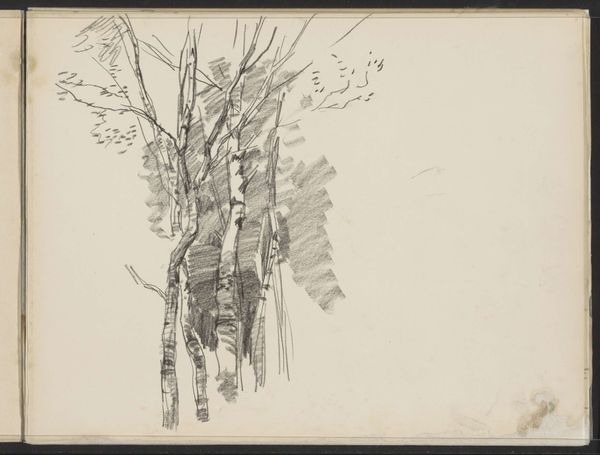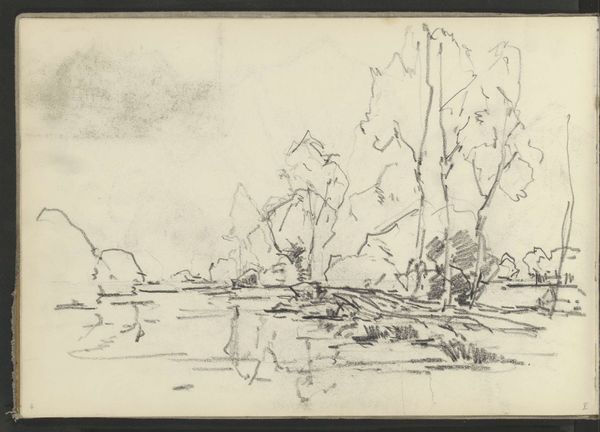
Dimensions: height 95 mm, width 154 mm
Copyright: Rijks Museum: Open Domain
Editor: So, here we have Willem Cornelis Rip’s "Heuvellandschap met bomen" from 1892, a pencil drawing. The delicate strokes give it an ethereal, almost dreamlike quality. What catches your eye? Curator: What I find compelling is the raw evidence of process. Look at the pencil strokes themselves—the very materiality of the graphite on paper. Consider the socio-economic context: the accessibility of this medium allowed for the rapid dissemination of landscape imagery. How might the means of producing and circulating these images influence how landscapes were perceived and consumed? Editor: That's an interesting way to look at it. I was focused on the trees, the suggestion of the hills… the artistry, I guess. Curator: But isn't the "artistry" itself constructed? By examining the materials and their availability, we begin to see the work not just as an isolated aesthetic object but as a product of its time. The very act of sketching, the rapid execution…it suggests a certain immediacy, a reaction to a specific locale, that the artist then reproduces and makes available to others through relatively inexpensive means. Do you think the rise of readily available art supplies democratized art, or perhaps diluted its value? Editor: I suppose it’s both, right? It allowed more people to participate but may have changed what was considered ‘high art’ in the process. Now that you point it out, the drawing almost feels like a mass produced image, rather than unique artistic expression, which seems to subvert its value. Curator: Exactly! The relationship between artistic labor and accessibility changes drastically. Consider how the traditional role of the artist is reshaped by the industrial availability of tools. Editor: I’m beginning to see how analyzing the materials used and the time it was made in affects our interpretation of it. Thanks for bringing this to my attention! Curator: The means of production shape our understanding. Thinking about materiality and access really open up a different lens for evaluating art, and the world around us.
Comments
No comments
Be the first to comment and join the conversation on the ultimate creative platform.
